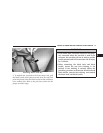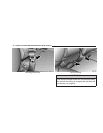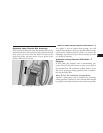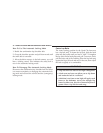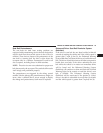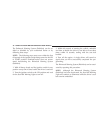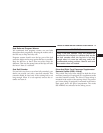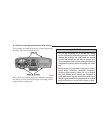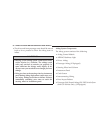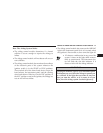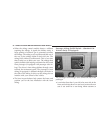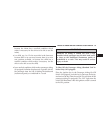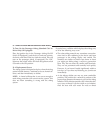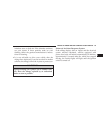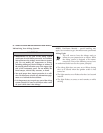
Airbags inflate in moderate to high speed impacts. Along
with the seatbelts, front airbags work with the instrument
panel knee bolsters to provide improved protection for
the driver and front passenger.
The seat belts are designed to protect you in many types
of collisions. The front airbags deploy in moderate to
severe frontal collisions. In certain types of collisions, the
front airbags may be triggered. But even in collisions
where the airbags work, you need the seat belts to keep
you in the right position for the airbags to protect you
properly.
Here are some simple steps you can follow to minimize
the risk of harm from a deploying airbag.
•
Children 12 years and under should ride buckled up in
a rear seat, if available.
•
Infants in rear facing child restraints must NEVER
ride in the front seat of a vehicle with a passenger front
airbag unless the airbag is turned off (Standard Cab
Vehicles Only). An airbag deployment can cause se-
vere injury or death to infants in that position. See the
Passenger Airbag On/Off Switch (If Equipped) sec-
tion.
•
If your vehicle does not have a rear seat, see the
Passenger Airbag On/Off Switch (If Equipped) sec-
tion.
•
Children that are not big enough to properly wear the
vehicle seat belt (see section on Child Restraints)
should be secured in the rear seat in child restraints or
belt-positioning booster seats. Older children who do
not use child restraints or belt-positioning booster
seats should ride properly buckled up in the rear seat.
Never allow children to slide the shoulder belt behind
them or under their arm.
•
All occupants should use their seat belts properly.
THINGS TO KNOW BEFORE STARTING YOUR VEHICLE 49
2



